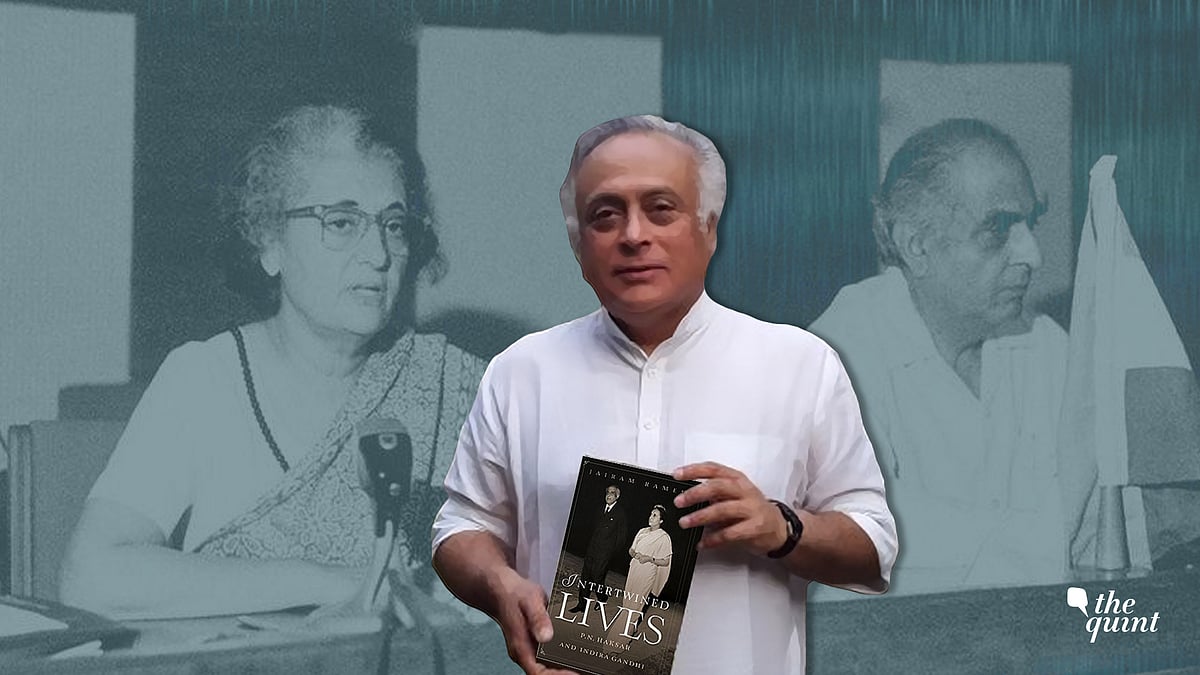PN Haksar was Indira Gandhi’s ‘Moral Compass’: Jairam Ramesh
Indira Gandhi & PN Haksar briefly parted ways in 1973 over Sanjay Gandhi’s Maruti row: Congress MP Jairam Ramesh

advertisement
Video Editor: Vishal Kumar
Camera: Shiv Kumar Maurya
“Nationalisation of banks, the ideological split in the Congress party, the war with Pakistan, the creation of Bangladesh, the cutting to size of President Nixon and Henry Kissinger, the Indo-Soviet treaty of 1971, the Simla Agreement of 1972 and the Delhi Agreement of 1973. These magnificent achievements of Indira Gandhi, the political leader, were made possible by PN Haksar who was functioning as her alter ego,” said Congress MP Jairam Ramesh.
In a chat with The Quint, Jairam Ramesh hails PN Haksar as the most powerful civil servant that India has had in the last 70 years. According to Ramesh, he played a pivotal role in defining Indira Gandhi’s politics and decision-making from 1967-1973.
He defined their relationship, the years of their association, estrangement and the years after separation.
Haksar Shaped Indira Gandhi’s Politics
In 1967, socialist MP Madhu Limaye described Indira Gandhi as a “dumb doll”. And according to Ramesh, Indira Gandhi “dreaded” the Parliament in her initial years. But Haksar used to carefully write out whatever she had to say in Parliament – whether they were short statements, spontaneous interventions or long speeches.
Haksar played a great role in shaping Indira Gandhi’s foreign policy.
“The Indo-Soviet Treaty, which was a milestone, was possible because of Haksar. He was the one who sold it to Mrs Gandhi after Kissinger's air dash to China from Rawalpindi in 1971,” said Ramesh. Then the opening up of India to Iran and the establishment of a special relationship with France, according to Ramesh, was because of PN Haksar.
Sanjay Gandhi’s Ambitious Maruti Project Led to the Fallout
Recalling the incident that led to the fallout between Indira Gandhi and PN Haksar, Ramesh tells The Quint that the estrangement was entirely because of Sanjay Gandhi’s Maruti episode. Sanjay Gandhi wanted to unveil a Maruti car project in India, but Haksar had two major objections:
- First, he was opposed to a passenger car project per se. He said India must invest in public transport and that India didn’t require passenger cars as there already were passenger car manufacturers at that time. India, he thought, needed two-wheelers but, most importantly, it required public transport. So, that was an ideological objection.
- His second objection was that as the son of a prime minister, Sanjay Gandhi "should not be doing this kind of a business venture”.
By mid-December 1972, Haksar had made it clear to Indira Gandhi that he would quit. According to Ramesh, Indira Gandhi made no special effort to hold him back. Perhaps, she knew he had made up his mind.
Haksar Continued to be PM’s Special Envoy
Even after PN Haksar quit Indira Gandhi’s secretariat in 1973, in Ramesh’s words, “Gandhi continues to use Haksar”.
Ramesh recalls Haksar’s role in paving the path for then-PM Rajiv Gandhi’s historic visit to Beijing, in December 1988, as a special envoy tasked with reconciling with China.
Contrasting Personalities: Indira Was ‘Pragmatic’, Haksar A ‘Marxist’
Ramesh describes Indira Gandhi and PN Haksar as having two contrasting personalities. Ramesh holds the view that Indira Gandhi became more “pragmatic” after 1980s, while PN Haksar remained an “unrepentant Marxist”.
According to Ramesh, Haksar never compromised with his feelings. He said and wrote what he felt. But Gandhi was more conscious of what she did.
“A politician has to change, but an ideologue doesn’t. Haksar was an ideologue.”